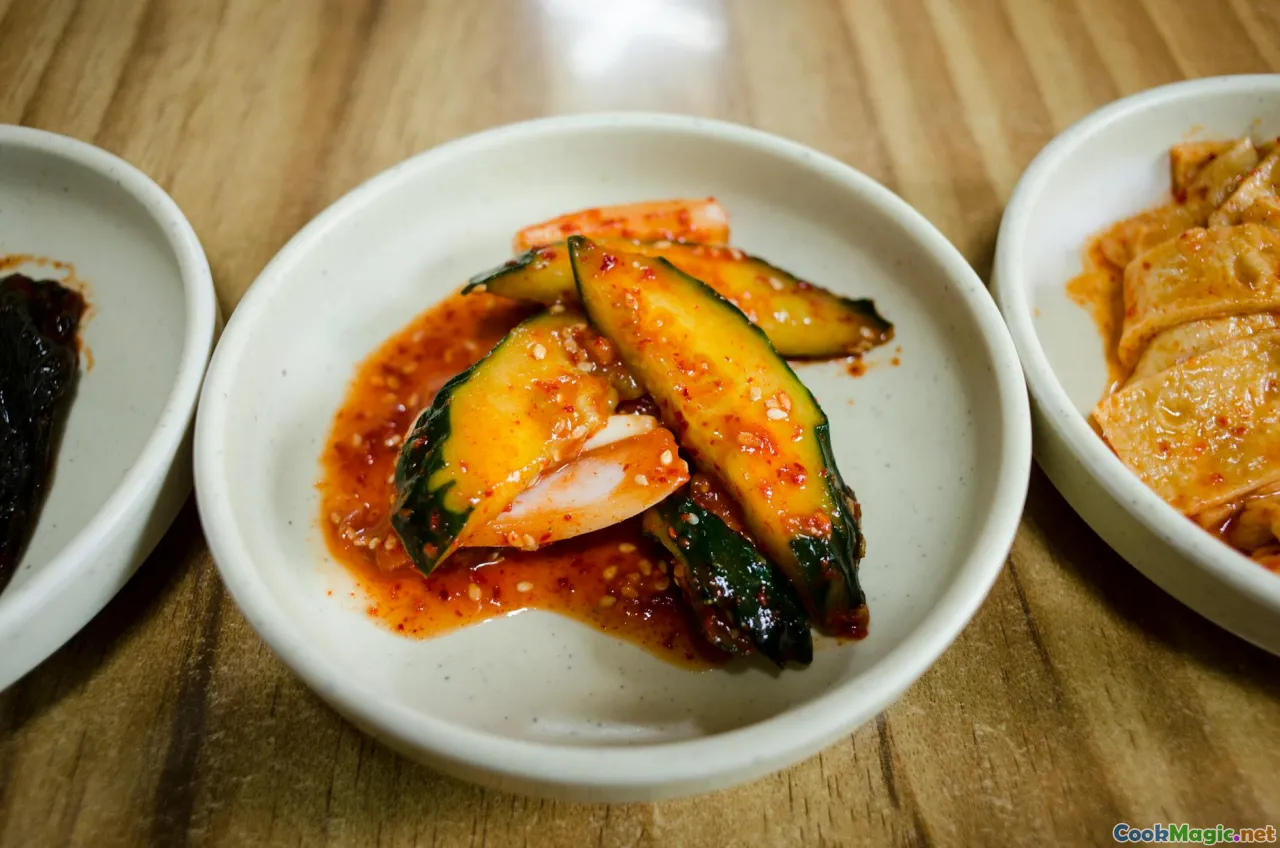The Science Behind Kimchi Fermentation
8 min read Dive into the fascinating science of kimchi fermentation—exploring how tradition meets microbiology to create Korea's iconic spicy, tangy, and probiotic-rich dish. April 20, 2025 06:55
The Science Behind Kimchi Fermentation
Imagine a humble cabbage transforming into a vibrant, tangy, and complex dish that has been cherished for centuries in Korea. This culinary marvel, kimchi, is more than just a side dish; it's a living testament to the intricate dance between tradition, microbiology, and flavor. But what exactly happens on a scientific level as kimchi ferments? How does this process preserve the food, enhance its nutritional profile, and develop its signature taste?
Join me as we embark on an immersive journey into the fascinating world of kimchi fermentation—unraveling the microbial symphony, chemical transformations, and cultural significance that make this Korean staple a marvel of natural preservation and flavor development.
The Cultural and Historical Tapestry of Kimchi
Before diving into the microbiological intricacies, it's essential to appreciate kimchi's rich cultural tapestry. For over two millennia, kimchi has been woven into Korea's social fabric, symbolizing hospitality, resilience, and seasonal rhythm. Traditionally, families would prepare large quantities of kimchi during winter, a process called "Kimjang," which is now recognized by UNESCO as an intangible cultural heritage.
From the bustling streets of Seoul to remote mountain villages, the act of making kimchi is as much a communal ritual as it is a culinary craft. Its flavors vary by region, season, and family recipes, but all share the common thread of fermentation—a natural preservation method that transforms humble vegetables into a healthful powerhouse.
The Basics of Kimchi Fermentation
At its core, kimchi fermentation is a biological process in which beneficial microbes convert sugars into lactic acid, creating a sour, tangy flavor and a hostile environment for spoilage organisms. This transformation is driven primarily by lactic acid bacteria (LAB), a diverse group of microbes that thrive in the salty, anaerobic (oxygen-free) conditions of fermenting kimchi.
Ingredients and Preparation
Traditional kimchi involves napa cabbage, radish, garlic, ginger, scallions, fish sauce or salted shrimp, and red pepper flakes. The preparation begins by salting the cabbage, which draws out excess water, reducing microbial competition and creating a favorable environment for beneficial bacteria.
Once seasoned and packed into jars or traditional earthenware pots, the vegetables are sealed and left to ferment at controlled temperatures. The initial phase involves rapid microbial activity, followed by slow, steady fermentation that can last from a few days to several months.
Microbial Dynamics: The Microbiome of Kimchi
The magic of fermentation lies in the diverse microbial communities that colonize kimchi. While many bacteria are present initially, only a select few dominate during the fermentation process.
Key Microorganisms
- Lactic Acid Bacteria (LAB): The star players, including Leuconostoc mesenteroides, Lactobacillus plantarum, and Lactobacillus brevis. These bacteria are responsible for acid production, flavor development, and preservation.
- Leuconostoc species: Active in early fermentation, producing carbon dioxide, which creates an anaerobic environment and contributes to the characteristic effervescence.
- Lactobacillus species: Dominate later, further lowering pH and developing the deeper sour notes.
- Other microbes: Yeasts and other bacteria may be present but generally play a minor role.
Microbial Succession
The microbial community in kimchi undergoes a fascinating succession. Initially, surface microbes and environmental bacteria may be present, but as salinity and acidity increase, only acid-tolerant LAB thrive. This natural selection ensures the safety and stability of the final product.
Chemical Transformations and Flavor Development
As microbes digest sugars and other organic compounds, a series of chemical reactions occur that shape kimchi’s complex flavor profile.
Lactic Acid Production
LAB ferment sugars into lactic acid, which imparts the signature tangy taste and acts as a preservative. The pH drops from neutral (~7) to around 4 or lower, creating an inhospitable environment for pathogenic bacteria.
Production of Other Compounds
- Acetic acid, ethanol, and carbon dioxide: Contribute to flavor, aroma, and texture.
- Amino acids and peptides: Develop umami and depth.
- Volatile compounds: Esters, aldehydes, and sulfur compounds give kimchi its complex aroma.
Texture and Visual Changes
The fermentation process also softens the vegetables, enhances their crunchiness through microbial-enzymatic activity, and develops a vibrant, glossy appearance.
The Health Benefits Rooted in Science
Kimchi isn't just flavor—it’s a probiotic powerhouse. The live beneficial bacteria confer a range of health benefits, including improved digestion, enhanced immune function, and potential anti-inflammatory effects. Moreover, fermentation increases the bioavailability of nutrients like vitamins C and K, and antioxidants.
Personal Reflections and Cultural Significance
Having tasted countless variations of kimchi across Korea—from the spicy, fiery types of Jeolla to the milder, fermented varieties of Seoul—I've come to appreciate its depth beyond flavor. Each batch is a living entity, a reflection of seasons, local ingredients, and the care of its maker.
Making kimchi at home is an act of cultural preservation, a way to connect with ancestors and community. The fermentation journey is a lesson in patience, science, and tradition—an ongoing dialogue between nature and human ingenuity.
Final Thoughts: The Perfect Harmony of Science and Tradition
Kimchi fermentation exemplifies how traditional food practices are grounded in complex scientific principles. The microbial populations, chemical reactions, and environmental factors all intertwine to create a dish that is as nutritious as it is delicious.
Next time you enjoy a spoonful of kimchi, remember the microscopic symphony at play—an ancient craft driven by modern science, a true testament to the harmony between nature and human culture.









